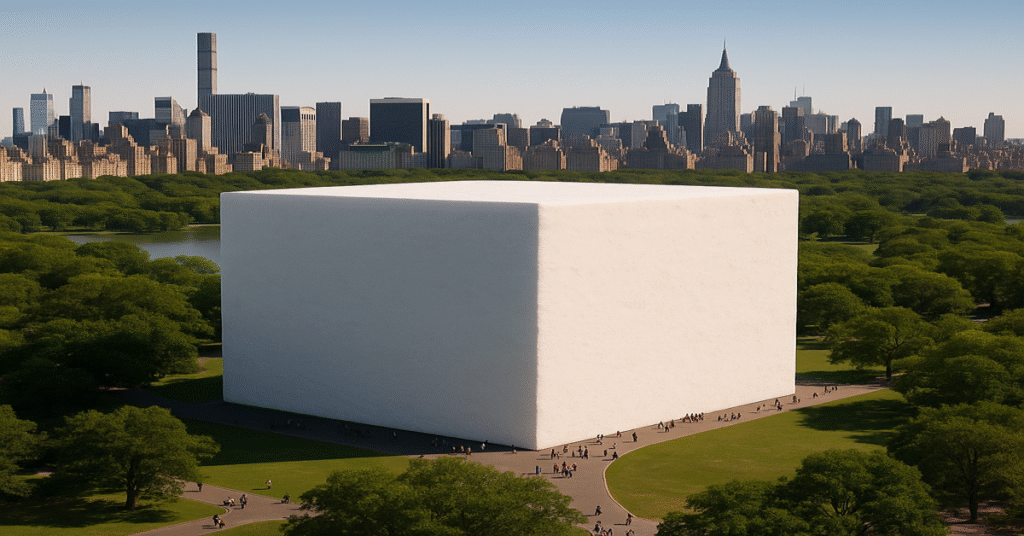
Dublin, September 2025
When we talk about carbon dioxide emissions, we’re usually talking about invisible numbers: 50 million tons this, 1.5°C that. It’s hard to grasp what any of it means. So, we froze it to demonstrate visually.
New York City emits about 50 million tons of CO₂ every year That’s 50 million blocks of dry ice, each weighing 1 ton. Each of those blocks would be: about 86 cm tall, roughly the size of a washing machine, made of solid CO₂, also known as dry ice
Stack those 50 million blocks together, and you get a massive giant cube – ninety times the volume of the Chrysler Building. That’s what we visualized here. In New York, buildings running on gas and transport fueled by oil are still the city’s biggest emitters.
Globally? We emit 40 billion tons per year. That’s 800 of those #NYC sized cubes, every year. And the problem is cumulative. Since the industrial revolution, we’ve added over 1.1 trillion tons of CO₂ to the atmosphere. That’s more than 21,000 New York cubes still hanging in the sky.
What Do We Do With All That Carbon? There are two options: Stop putting more up there (cut emissions fast); and start taking it back out, permanently Some CO₂ can be used in fuels, carbonizing drinks, concrete, or agriculture. That helps. But most of it, especially the long-term problem, needs to be put away permanently.
And where did most of the CO₂ come from? Underground. That’s where we can put it back.
It’s Not Impossible. The challenge is vast, but it’s not insurmountable. If we can imagine 50 million 1-ton blocks, we can plan to capture, move, and store them. And if we can build cities, fly planes, and create data centers that span the globe, we can engineer a system to manage carbon.
But only if we start now. This is what we are working on at Carbon Collect. We started with the science. Our work is grounded in over 30 years of #research by Dr Klaus Lackner the pioneer of Direct Air Capture, and five years of engineering. We haven’t solved every challenge. But we know what they are and we’re fixing them, one by one. No shortcuts. We’re refining. Improving. Scaling. With physics, not fiction. Because you can’t hype #CO₂ out of the atmosphere. You have to engineer it out, molecule by molecule, watt by watt.
We believe that solving it requires engineered systems that are scalable, modular, and rooted in physical reality. That’s where we’ve chosen to focus. And we recognize we can’t do it alone. Strategic partners who share that commitment, to pragmatism, to permanence, and to scale, will be essential to the journey ahead.
Footnote: Most of the time, CO₂ is a gas. That means it’s invisible, weightless-seeming, and hard to picture. 50 million tons of CO₂ in its gaseous form would fill about 38 trillion cubic feet, enough to blanket all five boroughs of New York in a layer 6 miles deep. That’s why we chose to freeze it into solid form (dry ice) for this image. Solid CO₂ takes up over 800 times less space than gas at normal atmospheric conditions. It helps compress a planetary-scale problem into something the eye, and the mind, can process.